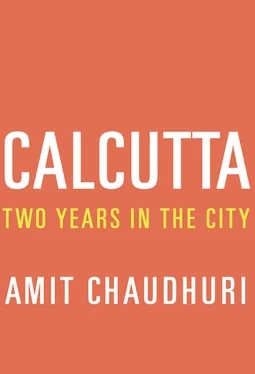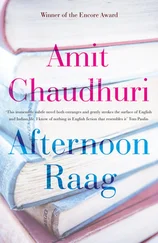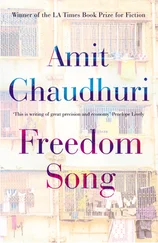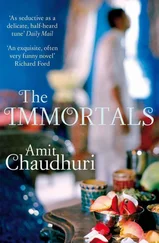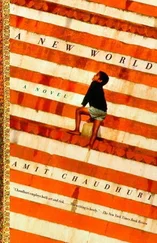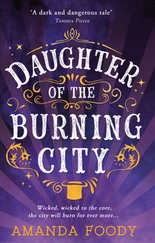Perhaps only wine, in the Western world, possesses these several, contradictory associations: orgiastic, excessive, religious, transubstantiating. And possibly this is why the Frenchman sips his red so slowly and thoughtfully. And also why many educated Bengalis, even now, attack their steak with a peculiar satisfaction.
“Also, the Italians couldn’t stand the way Indian diners are always interfering with the menu,” continued chef Sujan Mukherjee, heading for the crux of the matter. “It drove them mad.”
“Interfering? In what way?”
“The Indians want things prepared in their own way. It was too much for the Italians to take.”
Again and again, I’d confront the same story in relation to this subject — of chefs who’d fled the city and what little of the “new India” they had to cater to within it because of the latter’s careless ignorance and contempt of some of the sacrosanct protocols of Italian food.
“Like — al dente,” said the head chef. “Indians don’t understand al dente. They say the pasta hasn’t been cooked properly, that it needs to be boiled for longer.” He shook his head. “They couldn’t take it.”
The hazards and travails of a foreign climate! In the nineteenth century, entire colonial families used to be wiped out in these parts over summer and the monsoons by humidity, cholera, and malaria; the headstones and plaques in the Park Circus cemetery bear testimony to the variety of the dead, from the dribbling infant to the newly-wed, the hopeful English bride to the senile Anglo-Indian. More than a hundred years later, it was the new India that had both inveigled and assaulted these chefs, Bignotti and Medda and others, paying them no less than $5,000 monthly and then threatening them with a kind of annihilation.
“You know, the Italians like to use fresh tomatoes as a base and not do too much to them,” said Mr. Mukherjee. “Just sauté the tomatoes lightly, sprinkle basil on them. While Indians use tomato ketchup in their pasta sauces. They don’t understand the concept of fresh tomatoes.”

Outrage after outrage … It was clear that there were many things that this new India, as it resided and thrived in Calcutta, wanted to eat or own, but essentially didn’t comprehend or care for. Many memories and spots of time to do with my encounters with the new India — mostly here, in out-of-the-way Calcutta, but not exclusively here — coalesce for me as Mr. Mukherjee and I talk over cups of black coffee.
For instance, cheesecake. It was not until early 2011 that I tasted an authentic version of this dessert in India, in — and why not? — a recently opened American coffee-shop chain. Oddly, colonialism hadn’t introduced the cheesecake to the Indian middle class, but globalisation did — triangular pretenders that were dead ringers for the original, but tasted exactly like mousse. The new India was consuming this happily, paying more for the doppelgänger than many can afford for the real item. I once interrogated a chef about our national inability to produce real cheesecake. It seemed to me that a country that was replicating and inventing software but couldn’t make cheesecake simply wasn’t interested in doing so. Naipaul, in 1970, had observed mischievously in his excoriating An Area of Darkness that Indians still hadn’t learned to make cheese and bleach newspaper. I recall Khushwant Singh scolding Naipaul — who was in absentia — on television for the remark about paper, pointing out that he was clearly ignorant of local problems and conditions. I didn’t want to get into this sort of debate about something as trivial and rarefied — though in Europe it’s a pretty humble object — as cheesecake. Nevertheless, the chef I’d put the question to — the chef, as it happens, of a new-fangled luxury hotel then recently opened in Calcutta — said the local problem in this case was lack of recourse to Philadelphia cheese: an essential element in cheesecake, he said apologetically. I was struck by the fact that a high-fat cream cheese marketed by Kraft held the key to a dessert that had reportedly been eaten in ancient Greece; and that its absence should be responsible, in some way, for cheesecake arriving in India as a sort of creamy soufflé. Of course, these were agonised but private preoccupations: too embarrassing to share with and disclose to friends. Yet they were related to the conundrum of the “new India.” In the meanwhile, people in Calcutta were, and still are, eating this soufflé/mousse at regular intervals, blissfully calling it cheesecake. “A rose by any other name would smell as sweet,” someone said; and sweetness may have been the issue here — that, as long as it was sufficiently sugary (the great requisite of Indian, especially Bengali, sweetmeats is they be true to their name), it didn’t matter what it was called.
A newly created landscape engenders new names: this must be as true of India post-globalisation as it once was of earth. The Bible tells us how Adam, after his entry into Eden, went about naming the animals. But it doesn’t tell us if he named them correctly — if what he called a “horse,” for instance, was really a horse. Perhaps the Bible doesn’t remark upon this because it didn’t really matter. And something very similar is happening in the “new India.”
My wife and I once slipped into an expensive restaurant in the Taj Hotel in Bombay during a visit. The experience I had there isn’t unrelated to what I’ve just described above, and possesses some of the characteristic resonances of life in the “new India” (most of these post-globalisation epiphanies arise from eating out).
I found ginger pudding on the menu: one of my favourites, a fragrant piece of colonial stodge, available once in some schools and now in a club or two but hardly on a restaurant menu. Though it was teatime, I ordered one with alacrity.
The waiter brought me a pudding encircled by thin white single cream. I scooped a section up greedily, already made nervous by the numerous raisins in it, and snapped it up. I called the waiter.
“This isn’t ginger pudding,” I said to him. “It’s Christmas pudding.” It was early January; no hint of ginger on my palate. The waiter stood before me with an old stoic calm; then, as if he’d understood, he nodded. If I, a customer of the “new India,” had named the pudding “Christmas pudding,” he, a mere attendant in Eden, wasn’t going to argue it was something else. With an apathetic dignity, making no comment on my wastefulness, he lifted up the plate and left.
He returned with another plate of pudding that looked identical to the previous one.
“Ginger pudding, sir,” he said, smiling.
I looked at it with apprehension. It could be, I said to my wife before transferring a spoonful mouthward, that the Bombay Taj ensures that both Christmas and ginger puddings look exactly like each other.
I called the waiter. He approached me as he would a violent lunatic, warily but deferentially.
“It’s still Christmas pudding,” I said. I made a supercilious remark of which, in retrospect, I’m ashamed — but maybe the context justifies, or at least exculpates, it: “Do you know there’s a difference between Christmas and ginger pudding?” My trouble is that my weakness for ginger pudding is matched by my distaste for Christmas pudding. Anyway, the Taj charges its customers a high price for what it puts on its menu. Was there a secret falling out, in India, between chefs and customers? Had the former realised that the “new Indian” was incapable of tasting what he or she ate? And had Indian chefs, consequently, embarked quietly on a deliberate plan of mystification — quite distinct, for instance, from the low-cholesterol crusades that many Western chefs are busy with?
Читать дальше
